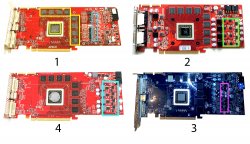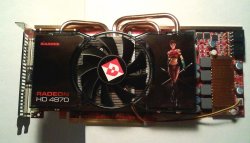HOW TO make yourself power cables (European Edition)
Farnell
Mouser
Budget needed for the whole exercise is between 5 and 10 euros.
What you need for two sets of cables:
2 x Molex Micro-fit 3.0, 6 pin connector - Manufacturer P/N 43025-0600 (about 70p each)
Mouser Part No: 538-43025-0600
Farnell Order Code: 672907
12 x 3mm pitch pins/crimp socket contacts, female for Molex Micro-Fit 3.0 - Manufacturer P/N 43030-0001 (about 7p each)
Mouser Part No: 538-43030-0001 or 538-43030-0007 (for thicker wire, but will do)
Farnell Order Code: 1462526 or 1462531 (for thicker wire, but will do)
2 x PCIe specific 6 pin Molex Mini-Fit Jr. connector - Manufacturer P/N 45559-0002 (about 20p each)
Mouse Part No: 538-45559-0002
Farnell Order Code: 1448708
12 x 4.2mm pitch pins/crimp socket contacts, female for Molex Mini-Fit Jr. - Manufacturer P/N 39-00-0039 (about 10p each)
Mouser Part No: 538-39-00-0039 or 538-39-00-0038 (for thicker wire but will do)
Farnell Order Code: 3585141 or 1462545 (for thicker wire but will do)
PCIe connectors seem to be in short supply on continent, but do not be tempted by any alternatives. Do not buy 39-01-2060 or 39-01-2065 as suggested in various online guides or the middle upper pin won't fit PCIe socket and you will have to do some carving. Oh, and order yourself few more pitch pins, just in case you broke or squashed a few.
What else - about 3 meters of good wire. Those you will have to source locally, from some electronics store, as the big boys deliver them by 100m reels, which is "slightly" more than you need.
Most PSU / Molex connections in PC use 10Amp 18AWG wire, which is perfectly suitable for our exercise. Yesterday I measured peak power draw of my 8 core MP by running Crysis demo in loop 10 times and peak reading was 417 watt. Compared to idle MP with 2600XT it looks like at peak ATI 4870 draws 210W more than ATI 2600. Add few more watts if you're overclocking. We are probably talking absolute maximum of 9-10 Amps per external PCIe socket.
I personally chose wire beyond the spec, just in case next year Apple decided to offer some beefed up 4870x2 or even more power hungry card and so, for my installation I picked 15Amp, 18AWG wire, which, in retrospect, by all means is an overkill. It's a little stiffer and thicker than regular wire you see all over your PC thus slightly harder to run inside the case. But if I ever need to split them to power four socket on two cards etc, at least I have enough buffer - as far as wire is concerned it is theoretically rated up to 180W per motherboard socket.
Get yourself some cable ties or a bit of heatshrink sleeve to make the cables tidy as well.
If anyone needs step by step instructions on how to crimp and insert pitch pins into plugs, give us a shout.
Word of advice - on the motherboard end make sure the cable tie is as close to the plug as possible, otherwise it will always be in the way of the C shaped cut out in fan assembly and protrude every time you try to plug and unplug it.
Personally, I bent my cables slightly towards front of the case, making sure they insert in and out easy and then heat shrunk sleeve around the end so it's a bit harder and stiffer, makes life easier. I also run my cables around and through fan cover. Initially I made one cable approx 45cm long modelling it after 8 to 6 pin PCIe interconnect cable in my PC, but it turned out way too long. 20-25cm seems like optimal length.
(still only Beta-Driver installed).





